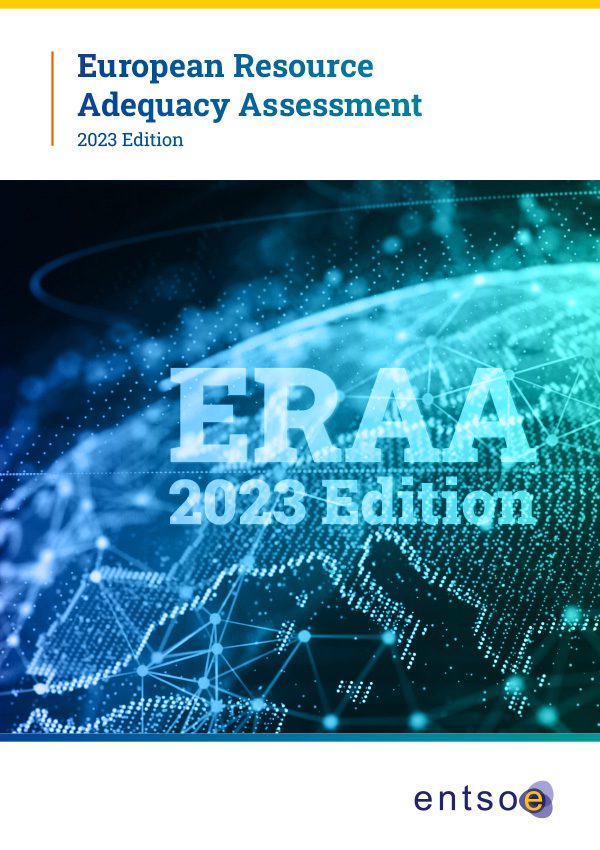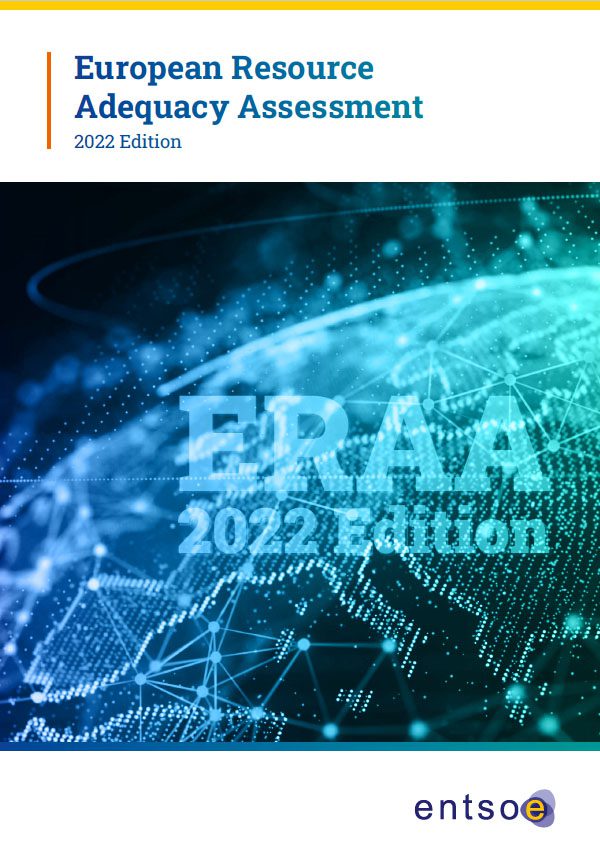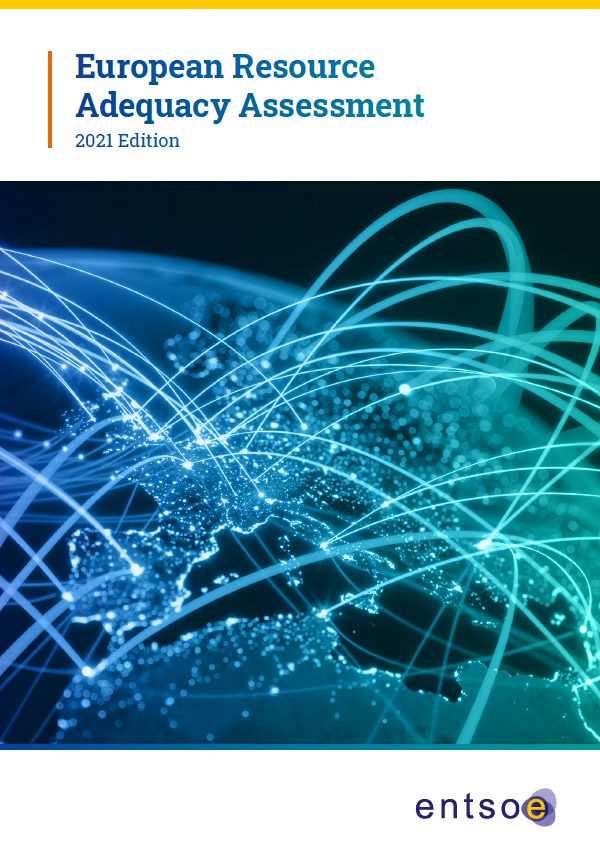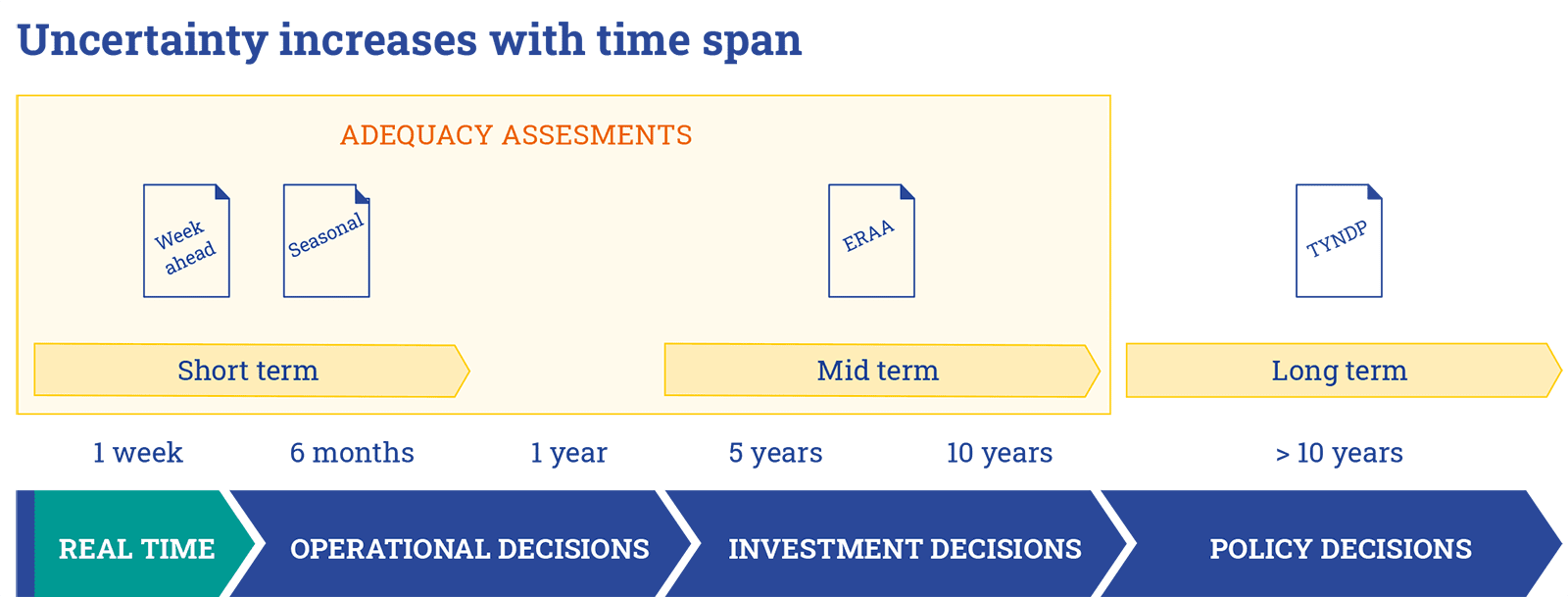What is the ERAA?
Latest editions
Frequently Asked Questions
1. Why has ENTSO-E developed the ERAA?
In 2019 the EU adopted the Electricity Regulation1, which updated how our electricity markets function to reflect the growing share of variable renewable energy in our system and enable flexible solutions. Part of this Regulation recognised the need for more comprehensive planning to ensure investments and regulatory decisions made today, are in line with our needs for the future. Our work today is structured by the challenge of delivering net-zero GHG emissions by 2050, a task which requires enormous international coordination and cooperation. The European Resource Adequacy Assessment (ERAA) is part of the toolbox to address this challenge, along with other ENTSO-E products such as the Ten-Year Network Development Plan and many other joint TSO actions.
With its full pan-European scope, the ERAA complements national and regional resource adequacy assessments which can give a more granular picture at a more local level. In this way, the ERAA promotes cooperation both across Europe, and between regional and national stakeholders.
The ERAA builds on deep TSO expertise and know-how gathered over many years assessing resource adequacy. This new ERAA sets a higher ambition and is a key tool for policy makers and all market actors to understand the dynamics of the future European power system and the risks and needs in meeting 24/7 secure supply to all consumers.
1: Regulation (EU) 2019/943 on the Internal Market for Electricity (Electricity Regulation)
2. What does the ERAA analyse?
In short, ERAA investigates whether the electricity system has sufficient resources to meet demand in the coming decade which sets us on a net-zero pathway. The scope of the ERAA includes all EU member states as well as the ENTSO-E perimeter beyond EU. It considers all EU member states as well as the ENTSO-E perimeter beyond EU2. This balance between supply and demand including various flexibility sources and grid interconnections is referred to as “resource adequacy”. There are three pillars to this question, each of which entails numerous complexities:
Supply
The ERAA must forecast how much electricity supply is available. At its most basic, this is a measure of how much generation capacity exists; this itself is measured through an innovative economic viability assessment. However, supply may be affected by everything from weather events which impact wind and solar production, to unforeseen outages of thermal capacity. There are furthermore new technologies, especially energy storage, which will increasingly impact how we supply electricity. the ERAA builds these uncertainties into its models and crosschecks them with TSOs national estimates of future supply.
Transmission
Europe’s integrated electricity grid means energy flows across the continent through interconnectors. Modelling the flows of electricity between generation and demand centres needs to account for the physical availability of infrastructure, as well as the functioning of our energy markets. This is an enormously complex task when one considers the scale of Europe’s networks, and the many paths an electron can take between being produced and consumed. To do this, the ERAA has pioneered the application of “Flow Based Market Coupling” analyses at Continental European scale in future time frames to complement conventional techniques.
Demand
As our energy system becomes more integrated, the demand side (i.e. those who actually consume energy and the purpose of the entire energy system) will become less passive and more active. This means that they can respond to the electricity market in real-time, changing their activities in reaction to price changes and other triggers. The ERAA needs to model how this will change demand behaviour over time.
2: With the exception of Iceland, which is not connected to the pan-European grid and thus does not have any effect on the assessment.
Resource adequacy assessments in future electricity systems need to embrace that the system is increasingly built on flexible and variable sources. Historic models of firm capacities and planned reserve margins are long gone. Every source to some extent has limitations and uncertainties which need to be understood and commonly assessed.
Taken together, these three pillars mean a multitude of variables and complexities must be boiled down to answer a single question: is there a risk demand cannot be met? In the ERAA, the metric used to answer this question is called Loss of Load Expectation (LOLE).
This is an estimate of how many hours supply would not meet demand, and can be checked against national reliability standards to confirm whether the adequacy situation is acceptable. It has to be noted that any LOLE value is essentially a risk assessment and an economic trade-off to be evaluated by policy makers and regulators. A non-zero LOLE value in an adequacy assessment is by no means an actual prediction of outage expectations as exceptional measures can always be taken, but flags the likelihood of extreme scarcity.
3. How will the ERAA be used?
The ERAA is not a concrete prediction of the future. Rather, it identifies potential vulnerabilities in our future electricity system which can be addressed proactively.
European policymakers and electricity stakeholders have a wide range of tools to address possible adequacy concerns. These can include reducing regulatory distortions, dynamic and flexible pricing, measures which empower consumers, energy storage, demand response and the development of infrastructure. Actors can also make investments in new capacity, prolong the life of old capacity, and use market mechanisms to pre-emptively respond to supply challenges. As a last resort, financial interventions like ‘capacity mechanisms’ may be considered, which keep power plants which would not otherwise be economical in the system, ready to provide energy at moments of peak demand.
With the core objective of climate neutrality by 2050, our energy system must manage an increasingly complex set of demands. The ERAA will be a core tool for policymakers, system operators and stakeholders to monitor the resource adequacy of the power system and to manage this transition smoothly, ensuring a secure and economical supply of electricity to customers even as more sustainable energy sources are integrated. In this way, the ERAA will support a successful energy transition.
The ERAA’s strength is its ability to look across the whole system to point towards risks which would be difficult to spot when viewed solely through a local perspective.
4. How does the ERAA compare to previous reports?
The ERAA builds on work previously done under the Mid-Term Adequacy Forecast (MAF), but expands and enhances it in several important ways. Most notable is the application of the Economic Viability Assessment, and the piloting of the flow-based methodology. Furthermore, the ERAA uses an expanded dataset and more advanced models than the ones which were included under MAF.
5. How are stakeholders contributing to the ERAA
ENTSO-E seeks to involve a wide range of stakeholders from the start of the ERAA process. Public webinars are organised early in the process to collect feedback on our methodologies and later on to present the results.
To increase transparency, all the information regarding future & past public webinars can be found on the stakeholders interactions page, where the presentations, recordings and additional material can also be found.
6. How does the ERAA fit with other ENTSO-E reports?
The ERAA’s objective is to guide decisions on investments and regulatory interventions. This means it has a mid to long-term outlook, fitting amongst ENTSO-E’s other analyses. ENTSO-E has maintained consistency on the data used between the ERAA and TYNDP, and aligned the scenarios employed. This ensures the two long term visions complement each other.








